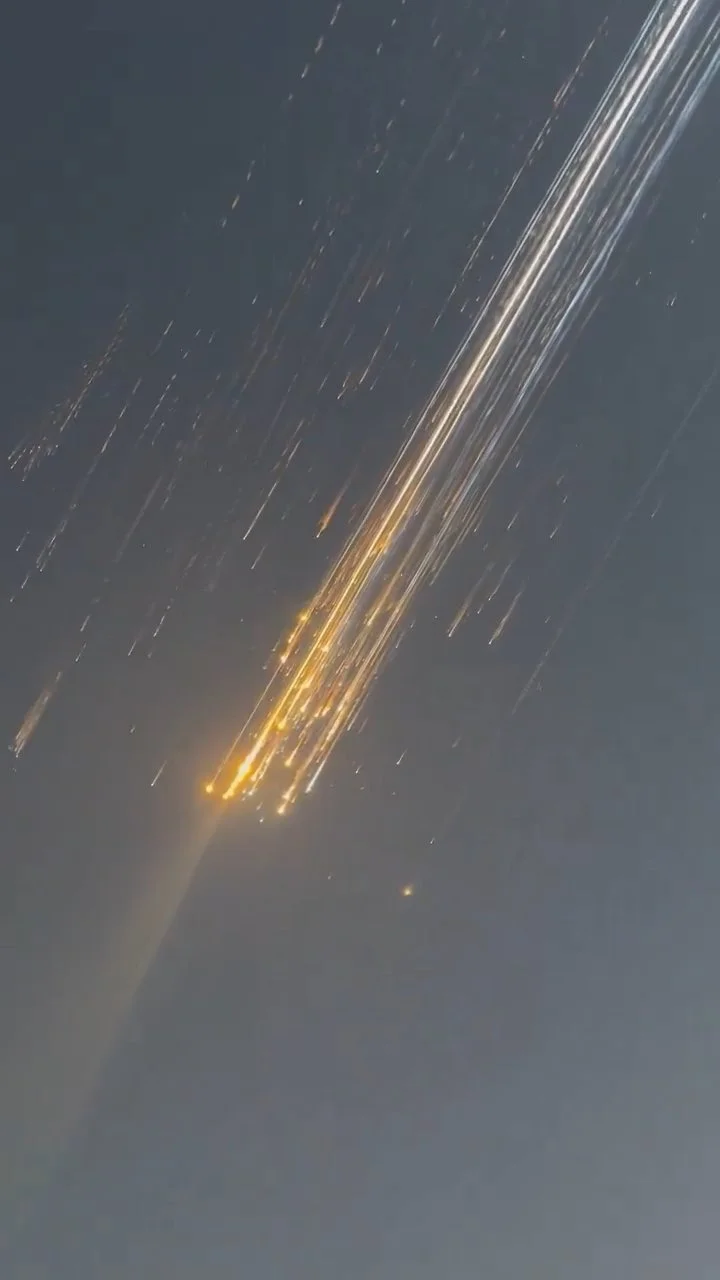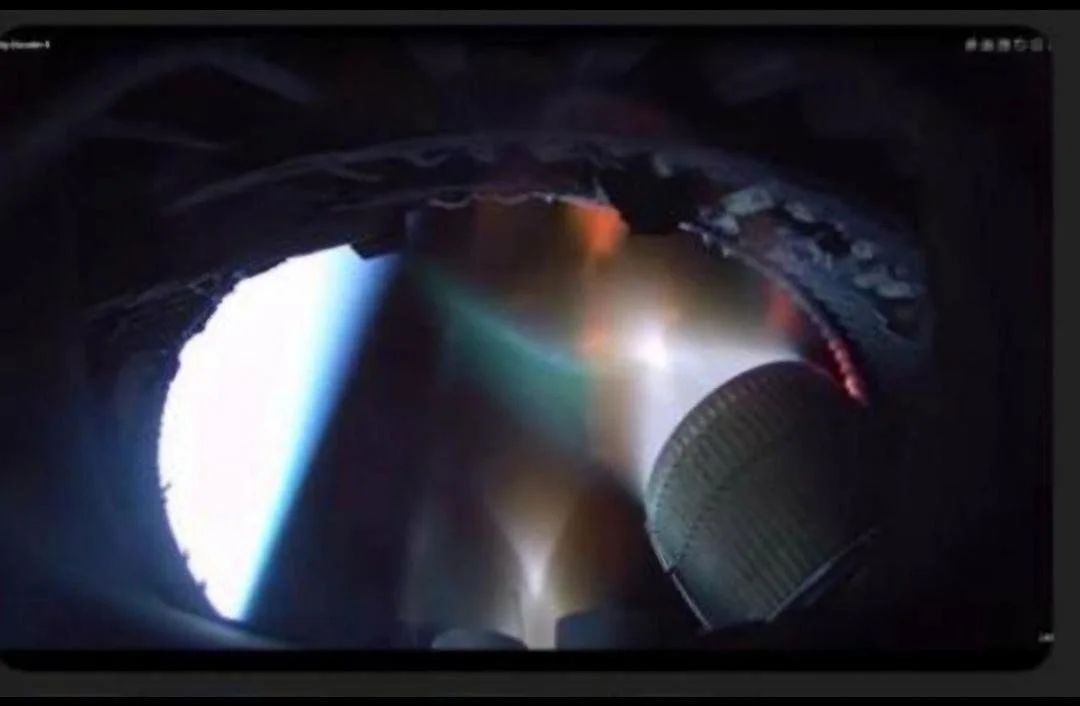Starship Flight 9 - A look into the past
Starship Flight 9 - A look into the past
With Starship Flight 9 just a handful of hours away, let’s take a look into the past of the Starship program this year, diving into what happened during the past failed flights, what were the problems, and how they were fixed!
Overview
In case you missed it, the Starship program hit a big “bump in the road” the past few months, with both Flights 7 and 8 failing back-to-back due to the explosions of Ships 33 and 34:
Flight 7 launched at 22:37 UTC on January 16th, 2025, featuring the first launch of Booster 14 and the debut launch of Block 2 Ship, with Ship 33. Liftoff was nominal, under the immense power of all 33 Raptor engines (of which you can find an article here), and the separation between the 2 stages occurred nominally at T+02:41. But while Booster 14 was conducting its boostback burn to the launch site to be caught, Ship 33 was experiencing problems… problems that would’ve changed forever how we view Ship ascent: after only 2 minutes of burn, a flash was observed in the attic (an unpressurized area between the bottom of the LOX tank and the Raptors), and pressure arose, indicating a leak; 2 minutes later, another leak occurred, and the 2 gases started mixing together uncontrollably, causing huge fires. Just 1 minute after these fires started, the engines began shutting down due to the damages reported, until only 1 RVac remained and Ship 33 began to spin on itself. About 3 minutes later, at T+11 minutes, the FTS (Flight Termination System) activated, destroying the Ship 76 km above the Turks and Caicos Islands.
The causes were declared to be oscillations that caused a higher-than-planned harmonic response, causing damage in the propulsion system (possibly of the RVac fuel feedlines) and causing the leaks.
As main mitigations, a gaseous nitrogen purge was added to control flammability, more vents were added in the aft section to manage a higher pressure, and the feedlines received new hardware.
Ship’s 33 debris raining down over the Turks and Caicos Islands after its explosion.
Flight 8 launched at 23:30 UTC on March 6th, 2025, featuring the launch of Booster 15 and Ship 34. Ship 34 had received the aforementioned modifications, and it had conducted a 56-s-long static fire a couple of weeks prior, the longest to date of the Starship program! So there was a lot of confidence that SpaceX solved the issue… at least, that’s what we thought.
After a nominal ascent, the 2 stages separated at T+2m40s, and they parted 2 different ways, with Booster 15 igniting 11 out of the 13 planned engines for the boostback burn to come back to the launch site, and Ship 34 igniting all 6 of its engines to reach a suborbital trajectory. Even though Booster 15 had 2 engines out on boostback burn, it was still given the “GO for Booster return,” and it approached the pad for a catch, which was completed after igniting 12 out of the 13 planned engines! But a few seconds later, at about T+8 minutes, a flash was observed in the aft section of S34, followed by an energetic event (fancy term for explosion) that destroyed 1 RVac and 1 Raptor SL engine, and damaged 2 others, causing them to shut down. This caused asymmetric thrust, and Ship 34 began to spin uncontrollably until the remaining 2 engines shut down as well, but the damage was done: contact was lost at T+9m30s, and the FTS triggered, causing another explosion over the Turks and Caicos.
A leaked, real image of Ship 34’s engine bay following the explosion. As you can see, engines are missing
What went wrong with S34 and B15?
Along with the confirmation of the Flight 9 launch date, SpaceX also released a bunch of information about the failure of Ship 34 and the problems on Booster 15:
Starting with Ship 34, the good news is that, unlike what many thought, this was a different problem than what occurred on Flight 7, even though the root cause is the same: according to what SpaceX said, a hardware failure in one of the Ship’s sea-level engines caused leaking of both propellants, and their mixing brought ignition, which then caused the failure. SpaceX also clarified that the mitigations they installed in Ship 34 after Flight 7 worked as intended to prevent Flight 7’s failure, and that's great news!
To mitigate Flight 8’s problem on future flights, Starship’s engines will receive additional preload on key joints, a new nitrogen purge system, and improvements to the propellant drain system; all these mitigations were tested in more than 100 long-duration hot fire tests of Raptors at McGregor, TX, and certified during Ship 35’s extensive testing campaign!
SpaceX has also declared that Raptor 3 will reduce the risk of such failures from happening, increasing Starship’s reliability for its exciting future!
As for Booster 15, the main problems it had were its engines: 2 engines did not ignite for the boostback burn, and 1 of them also failed to ignite during the landing burn; even though the high number of engines allows for multiple engines-out capability, SpaceX still needed to understand the issue and fix it, and it looks like they did: basically, the root cause seems to be torch ignition issues of the individual engines due to the thermal environment near the igniters… this may not make sense to you, so let’s understand what it means: each rocket engine needs a source of ignition to… well, ignite. Some rockets use propellants that burn on contact as soon as they’re put into the main combustion chamber, but that’s not what happens on most liquid-fueled rockets, which need a source of ignition: some rockets use pyrophoric fluids, like the TEA-TEB used on Falcon 9, but SpaceX opted to use torch igniters on Starship, which are basically small engines inside the main combustion chamber that mix small amounts of the 2 propellants in order to create a small flame; when the propellants pass through it, they ignite, starting the magic! Think of it as having a lighter and a bottle of deodorant: by igniting the lighter (torch igniter), that causes a flame, and by spraying deodorant (propellants) on that little flame, you get a huge flame; that’s exactly what happens on Raptor! But if the lighter doesn’t work, then the deodorant sprayed will not ignite, and that’s precisely what happened on the 2 Raptor engines that malfunctioned. So why did the torch igniters fail? SpaceX says it’s due to the temperature environment around the igniter, which likely suggests that it was too hot for the igniter to work.
As a mitigation for future flights, SpaceX will add insulation around the igniters, and we’ll be glad to see how it all works out!
Lastly, be sure to check our article on Raptors, our article on Elon Musk’s presentation, and our pre-flight article for Flight 9

